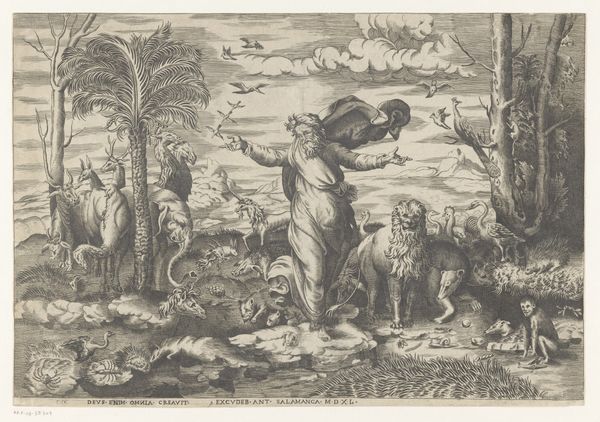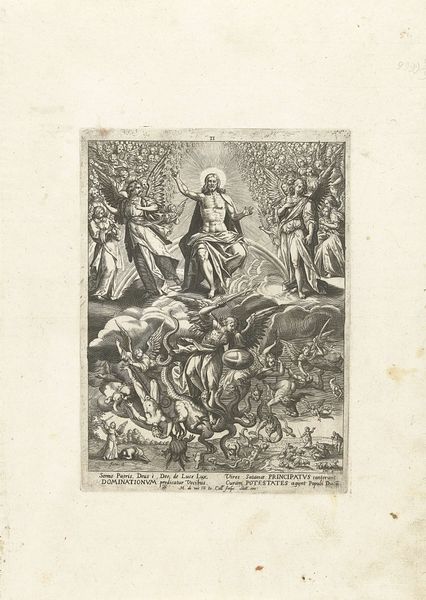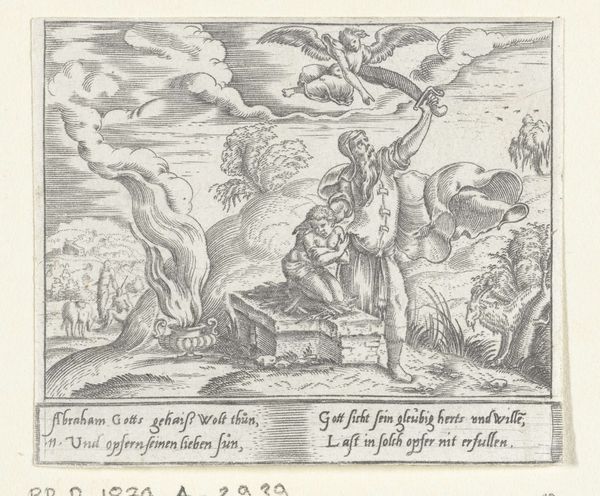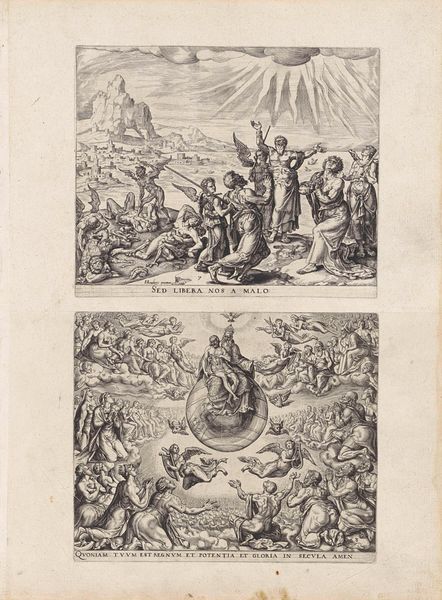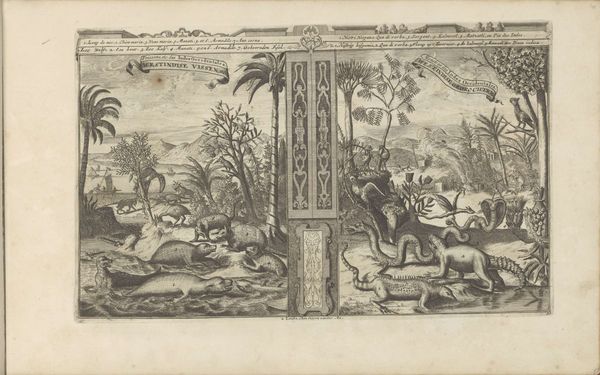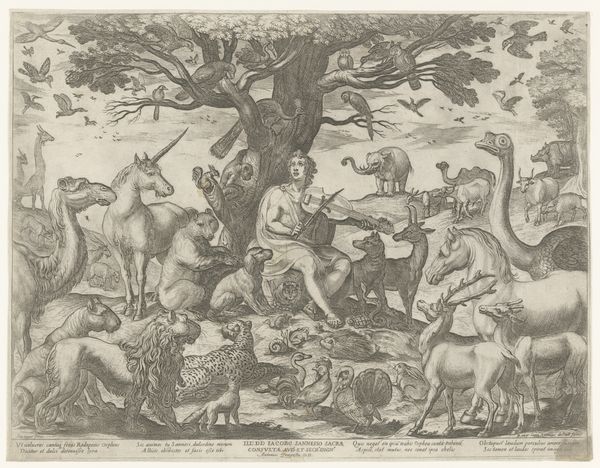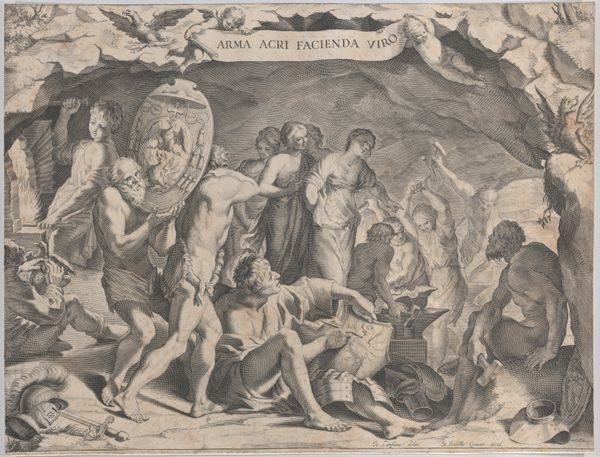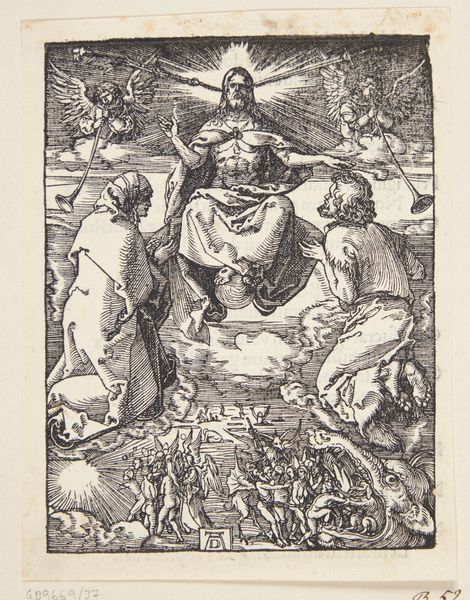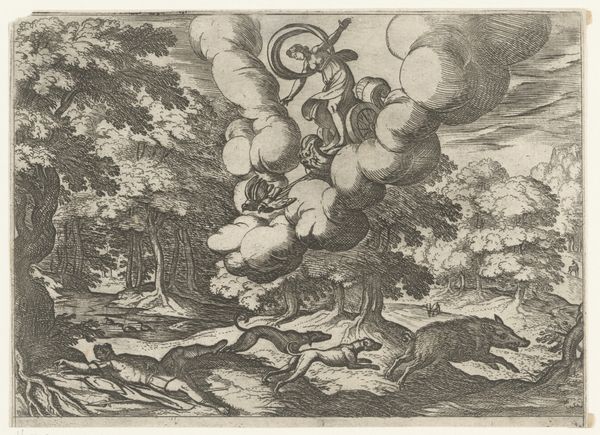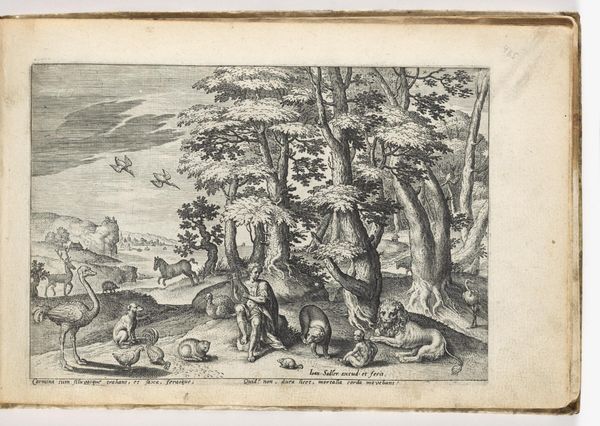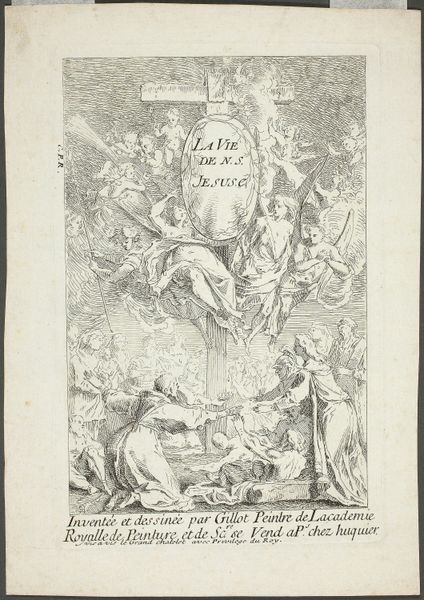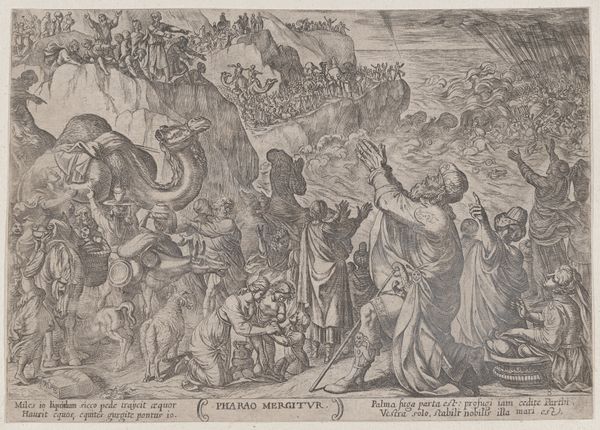
print, engraving
# print
#
landscape
#
figuration
#
history-painting
#
engraving
Dimensions: height 79 mm, width 104 mm
Copyright: Rijks Museum: Open Domain
Editor: This is "Creation of the World" by Etienne Delaune, from after 1569. It's an engraving, so relatively small, but the detail is incredible. It feels very... orderly, I guess. All the animals paired up, everything has its place. What do you see in it? Curator: I see a fascinating synthesis of classical order and nascent scientific curiosity. Notice how Delaune juxtaposes the biblical narrative with a near-clinical observation of the animal kingdom. This desire to codify the world reflects the broader intellectual climate of the late 16th century, even though he chooses an old tale. Consider, too, the symbols themselves – the sun and moon personified, the arrangement of animals as symbolic representations of earthly abundance... What feelings or ideas do they trigger for you? Editor: It makes me think about humanity's attempts to understand our place in the universe, then and now. The Latin inscription anchors it in a specific historical and religious context, but the depiction of creation feels timeless. Is that intentional, do you think? Curator: Precisely. Delaune invites us to participate in the ongoing cultural memory, where art carries a symbolic payload across generations. Creation myths, regardless of specific culture, address our most fundamental anxieties and aspirations. It’s as if Delaune provides a blueprint of the universe as understood at that time, pregnant with layers of inherited symbolism. Editor: So, it's not just a literal depiction of the biblical story, but a deeper reflection on how we make sense of the world through symbols? Curator: Precisely. And that enduring need, that desire to weave narratives that explain existence, persists. Even today. Editor: I see the piece very differently now. Thanks for helping me unpack all that! Curator: My pleasure. It's always enriching to see old things with new eyes.
Comments
No comments
Be the first to comment and join the conversation on the ultimate creative platform.



